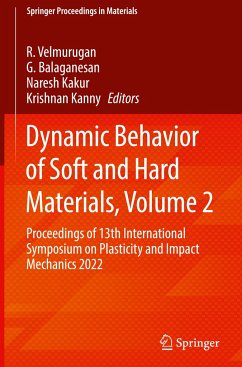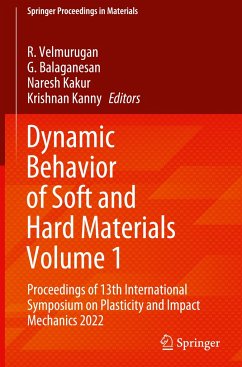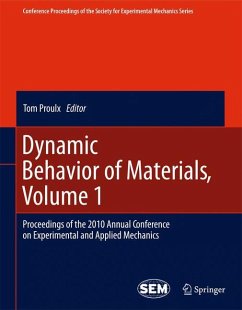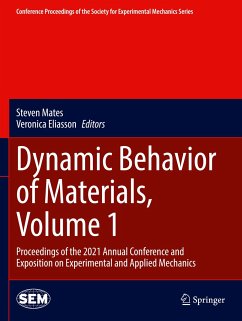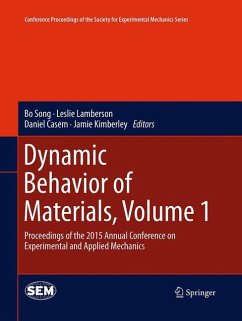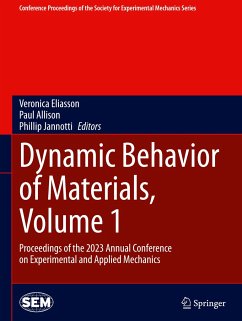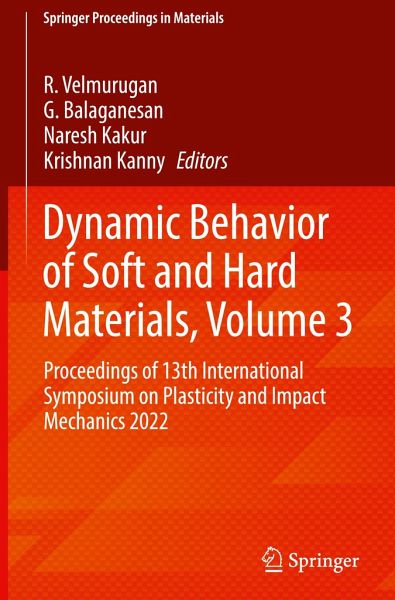
Dynamic Behavior of Soft and Hard Materials, Volume 3
Proceedings of 13th International Symposium on Plasticity and Impact Mechanics 2022
Herausgegeben: Velmurugan, R.; Balaganesan, G.; Kakur, Naresh; Kanny, Krishnan

PAYBACK Punkte
83 °P sammeln!
This book comprises the select peer-reviewed proceedings of the 13th International Symposium on Plasticity and Impact Mechanics (IMPLAST) 2022. It aims to provide a comprehensive and broad-spectrum picture of the state-of-the-art research and development in diverse areas, such as constitutive relations, theories of plasticity, stress waves in solids, earthquake loading, high-speed impact problems, fire and blast loading, structural crashworthiness and failure, mechanics of penetration and perforation, among others. The contents focus on aspects of large deformations and failure of materials, i...
This book comprises the select peer-reviewed proceedings of the 13th International Symposium on Plasticity and Impact Mechanics (IMPLAST) 2022. It aims to provide a comprehensive and broad-spectrum picture of the state-of-the-art research and development in diverse areas, such as constitutive relations, theories of plasticity, stress waves in solids, earthquake loading, high-speed impact problems, fire and blast loading, structural crashworthiness and failure, mechanics of penetration and perforation, among others. The contents focus on aspects of large deformations and failure of materials, including metals, composites, cellular, geomaterials, or concrete, and structures resulting from quasi-static earthquake, fire, impact, or blast loading. This book is a valuable resource for researchers and professionals working in academia and industry in the areas of mechanical, materials, and aerospace engineering.





